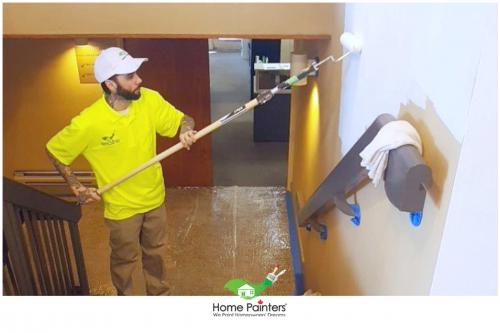How to Skim Coat Drywall After Wallpaper

You badly need to repair your drywall so that you can move on to painting after wallpaper removal, but you don’t know what to do. Don’t worry! You just removed wallpaper, an arduous and monotonous task that takes a while. You got this!
Painting after wallpaper removal sounds like an easy next step, especially after what you went through to get that paper down. Chances are, the person who installed the wallpaper didn’t prime the drywall beforehand. This means that there is likely quite a bit of damage, including torn paper and possibly chunks and gouges.
Skim coat is a technique that you can do to make your wall smooth. Professional wallpaper removal specialists will skim coat afterwards, especially in commercial settings where lighting can really highlight any dips or imperfections on the walls. Imperfections that might need to be hidden include bad taping or spot spackle repairs that aren’t perfectly smooth. The object is to make it so there are no noticeable seams.
How To Skim Coat
Important things to keep in mind:
- Skim coating takes time and effort.
- When adding water to your mud, you want it to be the consistency of pancake mix, not too thick but not as watery as soup.
- Look for the joint compound in the drywall section of your hardware store. This is where you can find larger buckets that will save you money.
- Application takes practice, but eventually you will find a technique that works for you.
Since you have just spent time removing wallpaper, it is assumed that your space is already prepared for skim coating. In case it is not, make sure to remove any light objects, push any larger and heavy objects into the centre of the room, and cover anything that needs to be covered. This will minimize clean-up and other potential issues afterwards.
Apply the mud using the trowel, in sections. Immediately scrape the mud with the putty knife, leaving a smooth layer behind. Do this process in thin layers, covering the whole wall. When it is dry, go back over and do another thin layer. This will give you the best results.
Once the mud has dried, sand to remove any tool marks before you prime. This will ensure that you have a nice smooth surface. Clean the wall before you prime, to remove any dust leftover from sanding.
Use an oil-based primer to seal the mud and give your walls an extra smooth finish. Once the primer has dried, you are ready to paint!
Post Your Ad Here
Comments